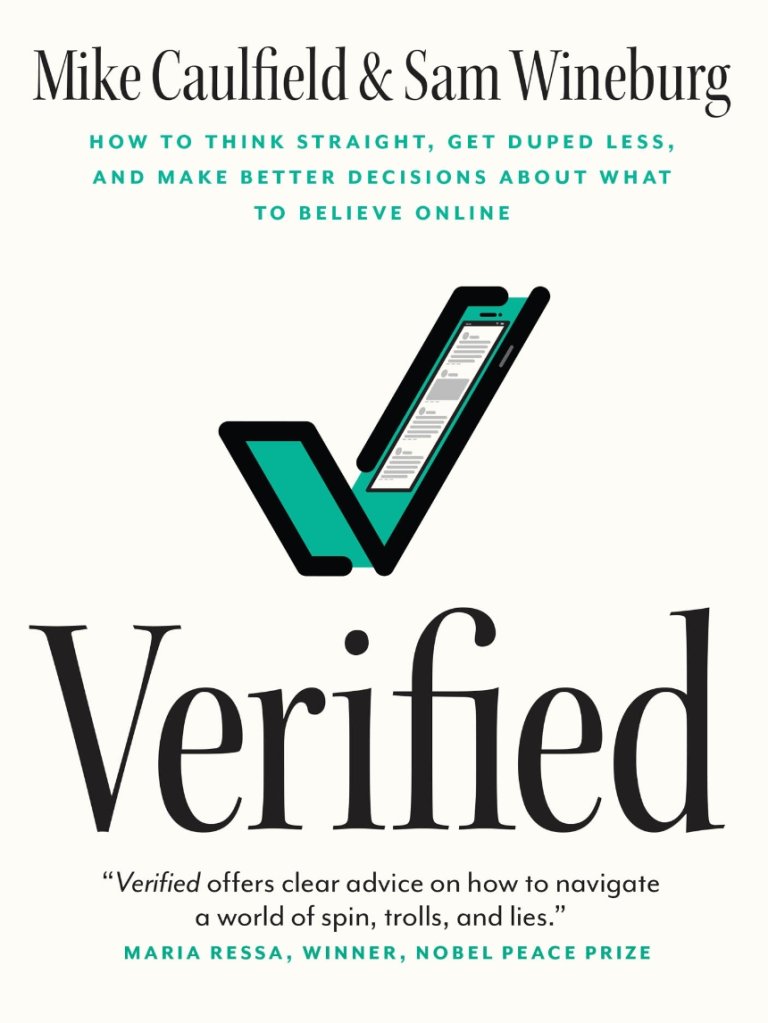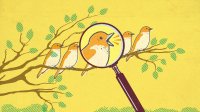Teaching Students How to Use Wikipedia as a Tool for Research
Wikipedia has moved far beyond its initial limitations, and is a helpful—and reputable—source for conducting research.
Your middle school teacher threatened to give you an F if you cited it. A reminder hung menacingly in the computer lab: a thick black line slashing the word in two. Even now, you can find blanket dismissals bellowing from college websites: Wikipedia “isn’t a credible resource because anyone is allowed to be a contributor.”
In its early days, Wikipedia had no shortage of problems. Errors propagated like fruit flies. People used the site to spoof their friends and exact revenge on their enemies. The site’s flaws were legendary, sometimes scandalous. A 2006 article accused John Seigenthaler, an assistant to Robert Kennedy in the 1960s, of having a hand in Kennedy’s assassination. The false charge stayed on the site for 132 days before it was finally removed. But not before Seigenthaler denounced Wikipedia in the pages of USA Today as a site run by “volunteer vandals.” The head of the American Library Association compared professors who let students use Wikipedia to nutritionists who prescribe a diet of Big Macs.

Scandals like John Seigenthaler’s gave Wikipedia a black eye. They also prompted the site to clean up its act. Today’s Wikipedia bears little resemblance to its earlier self. The world’s biggest and deepest-pocketed tech companies shamelessly grab content from the site. Google poaches on Wikipedia to populate its knowledge panels. Ask Amazon’s Alexa or Apple’s Siri a question, and you’re likely to get an answer that begins, “According to Wikipedia.” Chances are, your doctor consults the site too. A 2015 study found that Wikipedia was the single leading source of medical information for 50 to 70 percent of physicians. And among medical students, the percentage was even higher: 94 percent consulted the site. Each month, an estimated one billion people across the globe spend the equivalent of sixty thousand years on the site (that’s no typo). Today, Wikipedia is the fifth-most visited website on the entire internet and the only nonprofit among the top ten. Still, many people—not just middle school teachers—have misgivings about the site. Let’s consider the most widespread.
What about the Mistakes?
Aren’t there still mistakes on a site with fifty million articles written in three hundred different languages? Well, uh, yes. Wikipedia is written by human beings, and last we heard, human beings make mistakes. But unlike in its early years, today’s Wikipedia is armed with sophisticated mechanisms for weeding out errors, both technological (automated bots that gobble up changes from unidentified contributors) and human (hawk-eyed administrators who monitor lists of controversial pages). These procedures go a long way in catching problems before they turn scandalous. Instead of festering on the site for 132 days, as in John Seigenthaler’s case, it now takes about thirty minutes before vandalized content is scooped up and erased. The more popular an article, the more eyeballs that track it and the faster malicious content is vaporized.
Anyone Can Change Wikipedia, Can’t They?
It’s true that anyone with a laptop and an internet connection can edit most Wikipedia pages. But that doesn’t mean the edits survive. If someone hasn’t registered with Wikipedia, chances are that person’s edits will be apprehended by tireless bots on the hunt for unfamiliar IP addresses. Plus, there’s a whole category of “protected pages.” They are often Wikipedia’s most trafficked and most controversial pages, the ones that enflame passions and bring out the worst human tendencies (entries like “Barack Obama,” “Donald Trump,” “Gamergate,” and “Causes of transsexuality,” to name some of the most recognizable entries, but also the “Coat of arms of Lithuania”—go figure). If you consult these articles, you’ll see some features you might not have noticed before. See that teeny lock to the right of “Donald Trump”? That tells you the page is protected. Also, did you notice that the “Edit” tab (which usually appears after the “Read” tab) has gone AWOL? Unless you already have Wikipedia editing privileges, you won’t be able to lay your hands on these pages.
The system of locks is another way that Wikipedia has erected guardrails that prevent newbies, trolls, and just plain goofballs from making drive-by edits. As Wikipedia maven Jake Orlowitz notes, it’s no big deal to say “I changed Wikipedia.” The real mark of achievement is “being able to say I made an edit to Wikipedia—and it stuck.”
Isn’t Wikipedia Biased?
Yes, Wikipedia is biased—if by “biased” we mean that Wikipedia reflects the proclivities of its contributors, who overwhelmingly skew male, white, college educated, and middle class. Wikipedia is acutely aware of its bias (there’s an entire Wikipedia page devoted to it) and has made strides to enlist more women and people of color to its editing ranks. Over the past few years, the phenomenon of “edit-a-thons” has taken hold, where groups come together to create Wikipedia content to rectify imbalances in coverage. The first edit-a-thons focused on increasing the coverage of women scientists. But there have also been editing events on Black history, the history of Indigenous peoples, and the status of lower caste peoples in India, as well as events on many other underrepresented groups.
Wikipedia still isn’t where it wants to be—not by a long shot. But it’s trying. Between 2015 and 2018, the site increased the number of entries about women from 15 to 17 percent. This might not seem like a lot until you realize that the change resulted in 83,600 new entries. While the rest of the internet peddles clickbait, tracks our every move, and auctions our data to the highest bidder, Wikipedia—free, ad-less, and staffed by volunteers—is headed in the right direction. The site, notes internet theorist Yochai Benkler, captures our imagination not because Wikipedia is “so perfect” but because in so many cases it is “reasonably good... a proposition that would have been thought preposterous a mere half-decade ago.”
Wikipedia as a Tool for Research
Since we brought up your middle school teachers, we need to give credit where credit is due. When they warned you not to cite Wikipedia, they echoed Wikipedia’s own cautions: Wikipedia articles “are designed to introduce researchers to topics, not to be the final point of research.”
Encyclopedias are considered “tertiary” (a fancy word for “third”) sources. That means that they draw on information already contained in primary sources (original documents or research reports) and secondary sources (books, magazines, newspapers, TV broadcasts, and other published sources that are matters of public record). One of Wikipedia’s ironclad rules goes by the acronym of NOR, or “no original research.” This means that claims in a Wikipedia article must be anchored to already existing sources. As we’ll see, this is a godsend for all kinds of research, from the simplest fact-checks to finding your sea legs when embarking on a new research project.
Using Wikipedia to Validate Sources
If you’re not supposed to cite Wikipedia, what should you cite? The simple answer is that you cite the sources that Wikipedia cites. Let’s walk through an example.
Your Speech and Rhetoric professor makes an offhanded remark about one of the most famous speeches in American history, Sojourner Truth’s “Ain’t I a Woman?” “You know,” she says, with a sly, myth-busting smile, “She actually never said those words.”
No way! You studied the speech in high school. You even remember seeing a video of actor Alfre Woodard performing a stirring rendition. You go to Wikipedia and scroll through the article on Sojourner Truth until you see a separate subsection for “Ain’t I a Woman.”
The first recorded version of the speech was published in an abolitionist newspaper in 1851 and included no instance of the question “Ain’t I a Woman?” It was a white abolitionist who rewrote Truth’s speech in the middle of the Civil War to conform to the speech patterns of southern Black women. Truth (née Isabella “Bell” Baumfree) was born into slavery in 1791 in upstate New York. She spoke Dutch until age nine.
How do we know this? That’s where Wikipedia’s policy of “no original research” comes in. A footnote directs us to the references at the end of the Wikipedia artice, where we find this note:
32. ^ Craig, Maxine Leeds. Ain’t I a Beauty Queen: Black Women, Beauty, and the Politics of Race, Oxford University Press USA, 2002, p. 7. ISBN 0-19-515262-X
Now, if you’re just trying to fact-check your professor, you can stop here. Really. Odds are that between her PhD and a book published by Oxford University Press (a very good press, by the way), there’s something to the claim. However, should you decide to go deeper—perhaps even write a paper about Sojourner Truth—you should take the next step. You’ll need to look up Maxine Leeds Craig’s book to verify that it says what Wikipedia says it does.
The Messiness of Making Knowledge
Making knowledge is messy. Interpretations conflict. Scholars argue about which facts to include and which to downplay—even whether a statement is a fact. Typical textbooks hide these debates and serve up just the conclusions, delivered in neat little bundles. But Wikipedia’s transparency gives us a peek into how the sausage of knowledge is made. You might not have noticed the tab hiding in plain sight next to Wikipedia’s “Article” tab, the “Talk” tab. When you click on “Talk,” you enter a raucous world of knowledge negotiation in which Wikipedians hash out challenges to an article, discuss new evidence, and deliberate if a change is warranted. All these discussions (some of which get out of hand and have to be curtailed by top-level Wikipedians) are conducted in public view. All you have to do is click, and you’re into the middle of a knowledge party. It’s Wikipedia’s commitment to transparency and a great way to peek behind the curtains of how knowledge is haggled over and agreed upon.
Reprinted with permission from Verified: How to Think Straight, Get Duped Less, and Make Better Decisions about What to Believe Online by Mike Caulfield and Sam Wineburg, published by the University of Chicago Press. © 2023 by Mike Caulfield and Sam Wineburg. All rights reserved.
